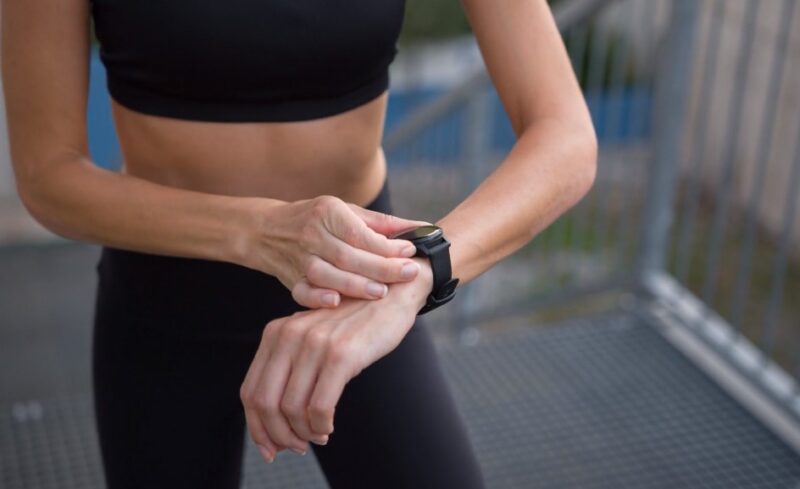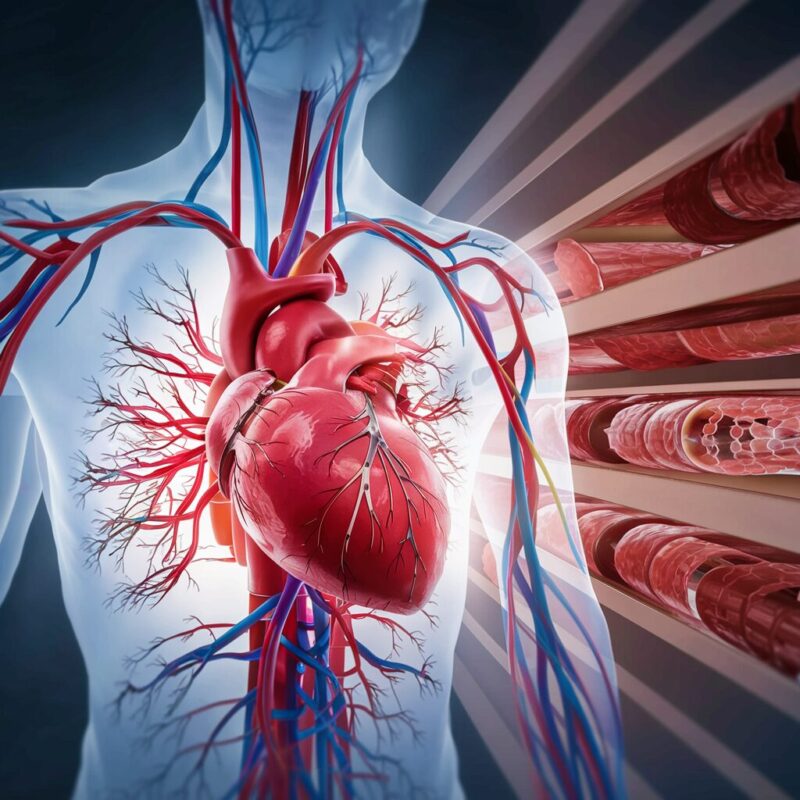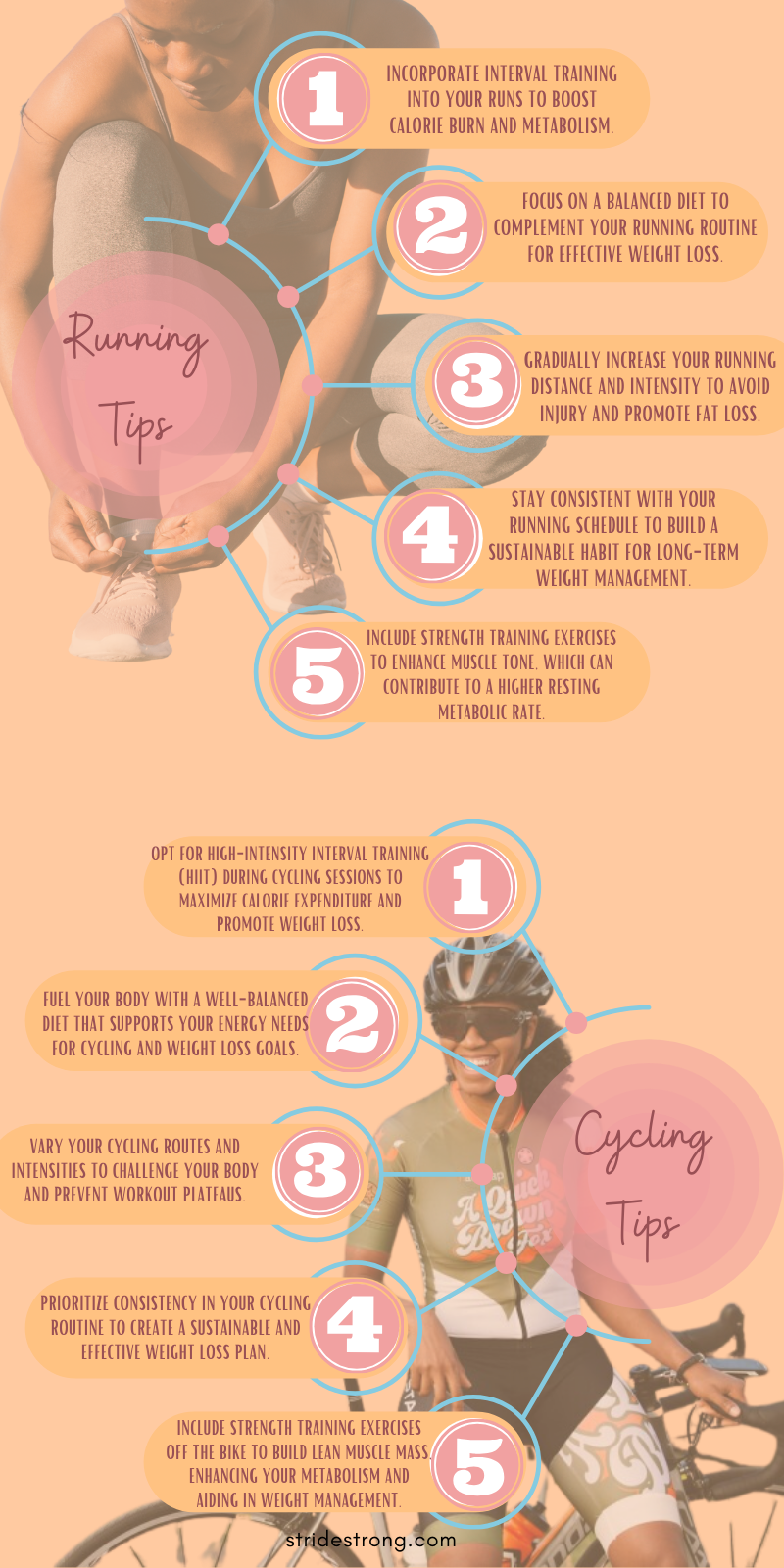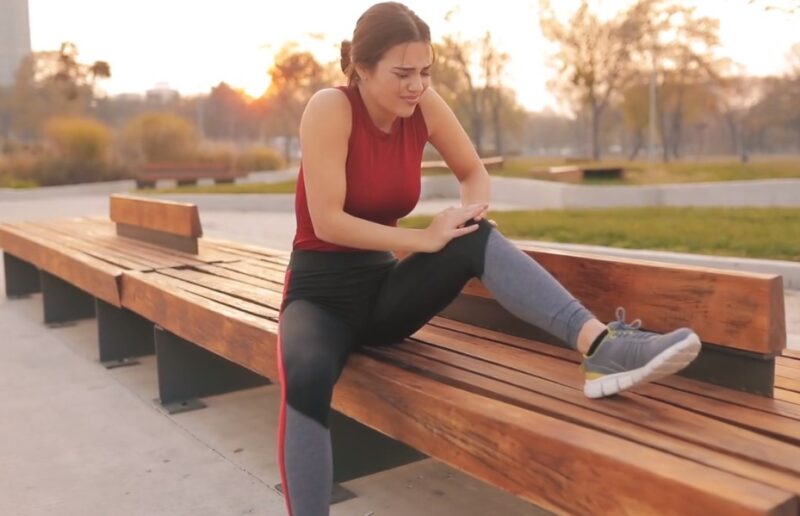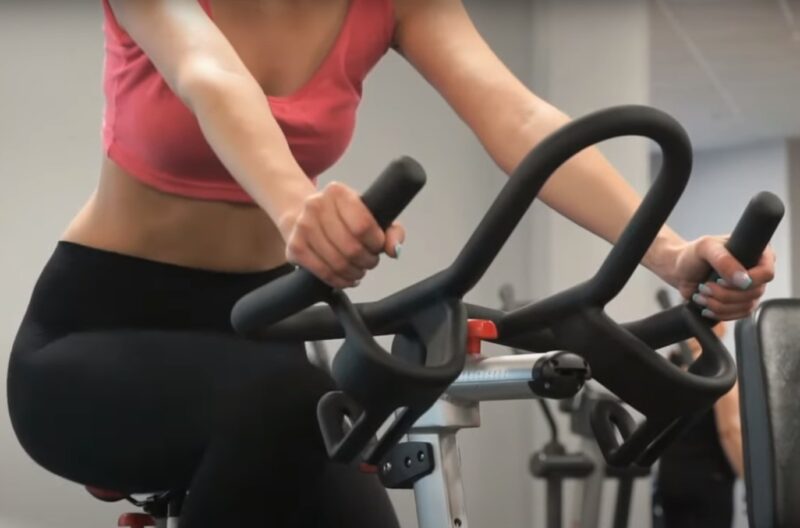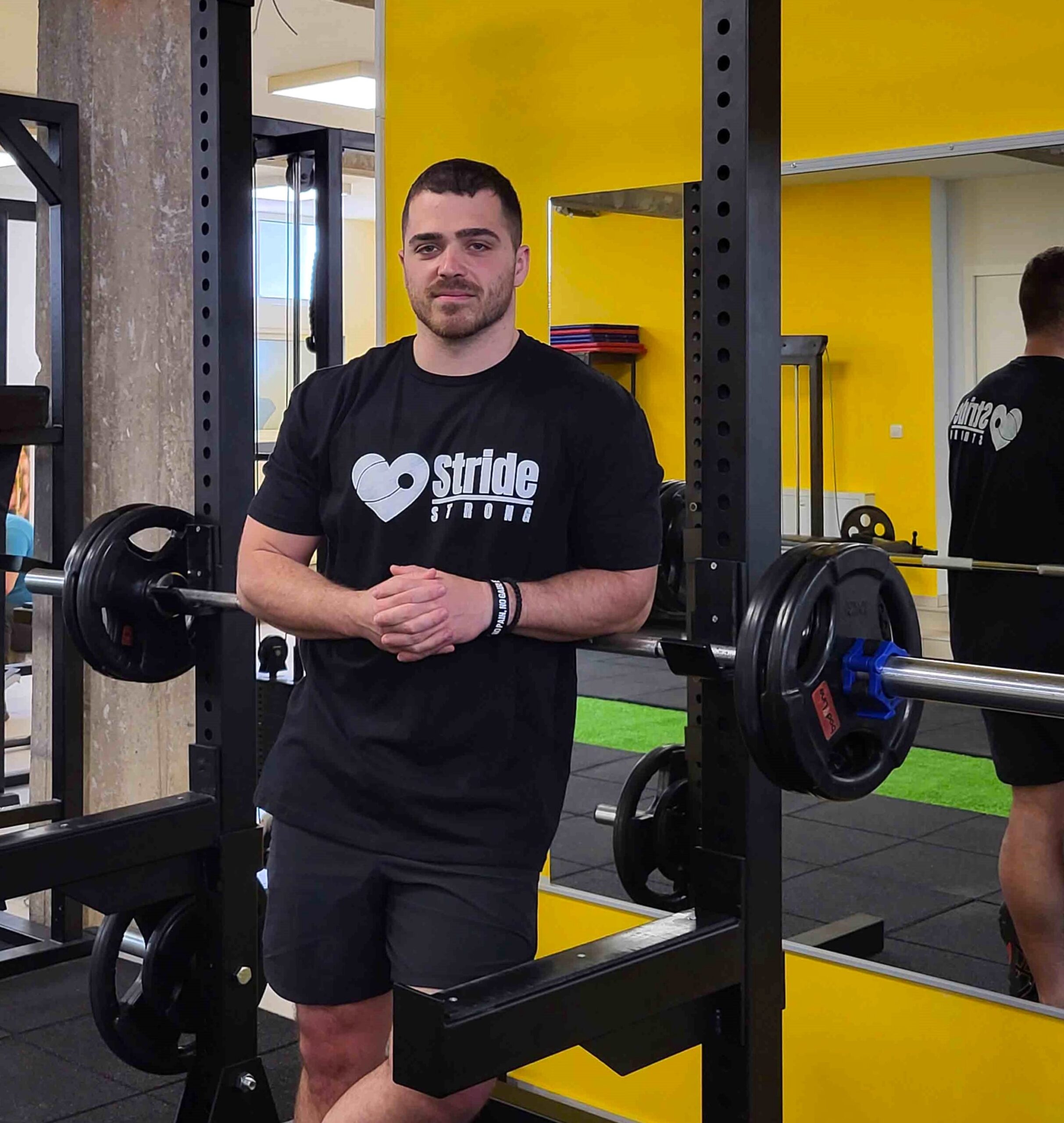Cycling or running? It’s more than just exercise but also about finding your rhythm.
Picture this. The soft whir of a bike tire on the road, or the hushed sound of a stationary bike in your cozy living room.
For some, it’s a meditative escape, a chance to pedal away stress and let the world blur by.
Question is, what is the right choice? It is more about personal preferences, but you should learn more about the real effects of both exercises.
I will share more about the good and bad sides of cycling and running, and help you make the best choice for your goals.
Before we explore this topic, take a look at my ‘Endurance Cardio Beginner Workout Plan‘ to start your transformation.
Which One Is Better For Weight Loss?
Okay, so let’s chat about whether cycling or running is the better weight-loss. It’s like this: both have their perks, but it all boils down to a few key things.
First up, calorie burn. Cycling and running can torch those pesky calories, but the real magic happens when you crank up the intensity.
So, if you’re pedaling like a maniac or sprinting like you’re being chased by a herd of caffeinated squirrels, you’re on the right track. 🚴♂️🏃♀️
Consider your daily routine. Are you a morning person who loves to lace up those running shoes at sunrise?
Or maybe you’re all about evening bike rides, wind in your hair, and the sun setting behind you.
Whatever floats your fitness boat, make sure it fits seamlessly into your day. Consistency is the secret sauce here.
Calorie Burn
Running is like the high-intensity superhero of calorie burn. It involves more muscle groups than a complicated handshake at a secret society meeting.
Christine Luff says:
“An average-sized runner will burn about 100 calories per mile.”
Cycling is the zen master of endurance. The best part? You can keep going and going, like the Energizer Bunny on a mission. Less perceived effort, more time in the saddle. And guess what? That means you might just stick with it longer, racking up those calorie-burning miles.
James Howell-Jones states that intensity can make a huge difference:
- Easy riding, such as when commuting or soft-pedalling, burns about 300 calories per hour.
- Moderate riding, when you’re working reasonably hard and getting a bit of a sweat on, burns about 600 calories per hour.
- Hard riding, such as when racing or going flat out up a climb, burns about 1,000 calories per hour.
Still, the question remains. Which one wins? Well, it’s like comparing apples and oranges – both delicious, but different vibes. So just choose the one that fits your groove.
Impact on Appetite
Exercise impacts hunger and satiety hormones. Some find running increases their appetite more than cycling.
However, when we check the overall impact, the result is a tie between these two.
Did you know that intense workout can actually lead to lower appetite?
According to Taylor Norris: “Aerobic exercise — such as running, cycling, and swimming — actually decreases appetite by changing the levels of hormones that drive our state of hunger.”
Which One is Better For Overall Health?
When it comes to overall health, they’re like the dynamic duo, each with its own superpowers.
Running is like a full-body symphony. Your legs, arms, and even your brain join in the chorus. It’s a mood booster, releasing those happy endorphins like confetti at a celebration. And guess what? Running might just add some extra years to your life.
| Parameter | Cycling | Running |
|---|---|---|
| Focus Area | Benefits the cardiovascular system with secondary focus on glutes and calves | Primary focus on the cardiovascular system but involves the entire body |
| Burning Calories | 300 to 1000 calories/hour | At least 100 per mile |
| Joint Impact | Low impact | High impact |
| Basic Requirements | A bicycle and helmet for outdoors; stationary bike for indoors | Running shoes for outdoors; treadmill for indoors |
| Building Muscle | Develops lower body muscles, particularly through resistance training | Strengthens glutes, hip flexors, hamstrings without significant mass gain |
| Cardiovascular Health | Comparable benefits to running; can make your heart stronger | Comparable benefits to cycling; improves aerobic capacity and cardiovascular health |
| Toning Muscle | Can help in toning muscles with an emphasis on lower body | May be preferable for overall muscle toning |
| Disadvantages | Potential for nerve injury, road hazards, exposure to pollution | Risk of overuse injuries, potential weight gain, increased risk of heart attack, damage to weight-bearing joints, increased risk of skin cancer |
Cardiovascular Health
Regular cycling sessions improve blood flow, lower blood pressure, and reduce the risk of heart disease. The only important thing here is consistency.
Try to adjust the sessions according to your needs. You cannot go wrong with choosing the right time. It can be early in the morning or later during the day.
According to Better Health Channel –
“Regular cycling stimulates and improves your heart, lungs and circulation, reducing your risk of cardiovascular diseases. Cycling strengthens your heart muscles, lowers resting pulse and reduces blood fat levels. Research also shows that people who cycle to work have two to three times less exposure to pollution than car commuters, so their lung function is improved.”
Those who simply cannot afford an hour a day for cycling should consider traveling to work with a bike.
Running releases endorphins—the “happy hormones.” These little fellas dance around, kicking stress and blues to the curb.
David Linden, Ph.D., a professor of neuroscience at the Johns Hopkins University School of Medicine highlights that there are even more benefits than the endorphin release:
“The mental benefits don’t stop when you finish your run — regular cardiovascular exercise can spark growth of new blood vessels to nourish the brain. Exercise may also produce new brain cells in certain locations through a process called neurogenesis, which may lead to an overall improvement in brain performance and prevent cognitive decline.”
Mental Health
Well, I already mentioned endorphins, which is one of the main benefits. But there are other advantages for well-being you will get no matter whether you prefer running or riding a bicycle. As long as you are physically active, you will feel much better about yourself.
According to Amber Sayer, it may be a perfect way to deal with anxiety:
Using running for anxiety relief can be a highly effective component of anxiety management. In fact, even a single run can immediately help reduce anxiety.
Joint Health
Cycling is Gentle on Joints
- Cycling is a low-impact exercise, making it an excellent choice for individuals with joint issues.
- The smooth, circular motion of pedaling minimizes stress on the joints, reducing the risk of injury.
- Whether you’re recovering from an injury or simply seeking a joint-friendly workout, cycling provides an effective cardiovascular workout without straining your joints.
Bryan D. Vargo from the Arthritis Foundation states:
“The more the joint moves through its full range of motion, the more synovial fluid is produced. This lubricates the joint so you move more easily the rest of the day.”
Running improves Bone Strength
- Running, on the other hand, offers high-impact benefits.
- It strengthens bones, promotes cardiovascular health, and burns calories.
- However, the repetitive impact of running can lead to joint strain and potential injuries.
- To mitigate this risk, focus on proper form, wear supportive footwear, and allow adequate recovery time between runs.
It is important to know that running is never a crucial factor that could lead to injuries.
AC Shilton said that:
Running strengthens bone and muscle, and it’s thought it may do the same for cartilage, which cushions joints. And strong muscles – built by running and strength-training – support joints, so they are less vulnerable to injury.
Get the Most Out of Cycling and Running With These Tips
So, I already mentioned the benefits. You will ensure them only with the right approach.
As already mentioned, safety must remain the main focus. Here are some tips that will help you get the most from these exercises.
- Mix It Up: Combining cycling and running in your workout routine can prevent boredom and reduce the risk of overuse injuries. It allows you to enjoy the benefits of both high-impact and low-impact exercises.
- Listen to Your Body: Both activities are demanding in their specific ways. Pay attention to your body’s signals. Rest when needed, and don’t push through pain, as this could lead to injuries.
- Set Realistic Goals: Whether it’s improving cardiovascular health, losing weight, or building endurance, set achievable goals. Gradually increase the intensity and duration of your workouts to avoid burnout.
- Invest in Good Equipment: A well-fitting pair of running shoes and a properly sized bicycle can make a significant difference in your performance and comfort. Consider also investing in safety gear, such as helmets and reflective clothing.
- Stay Consistent: Consistency is key to seeing results. Try to incorporate regular sessions of cycling or running into your weekly routine, adjusting the frequency and intensity according to your fitness level and goals.
- Monitor Your Progress: Keep a log of your workouts, noting down distances, times, and how you feel. Tracking your progress can be motivating and help you adjust your training plan as needed.
- Enjoy the Process: Remember, the best exercise is the one you enjoy and can stick with in the long run. Whether you prefer the solitude of running or the adventure of cycling, the most important thing is to have fun and enjoy the journey towards a healthier you.
So, Are There Any Downsides?
While I shared a lot of good sides related to both types of workout, you should also be aware that there are certain risks. The best approach is to secure safety by getting the right equipment and by staying cautious.
Risk of Injury
When you’re physically active, there’s always a chance of getting hurt.
Runners can strain their joints, especially in the knees, hips, and ankles.
Cyclists also have risks, like muscle imbalances and overuse injuries, especially in the lower back and knees. And if you cycle outdoors, there’s the added risk of accidents with vehicles or tricky terrain.
Environmental Conditions
Weather and environmental conditions play a role in how practical it is to cycle or run.
Runners might struggle with extreme temperatures, rain, or snow.
Cyclists face similar challenges, plus they have to deal with air pollution and traffic if they ride on roads.
Time and Space
Running is versatile, you can do it almost anywhere, whether on city streets or nature trails. It’s great for fitting exercise into a busy schedule.
On the other hand, cycling, especially outdoors, demands more time and access to suitable roads or trails.
In urban areas, finding those routes can be tricky. Indoor cycling solves this problem but requires some space at home for equipment.
That is one of the main reasons to buy a treadmill. This machine is perfect for losing weight.
FAQs
Related Posts:
- Cycling or Walking - Which Is Better to Lose Belly Fat?
- Cycling 1 Hour a Day Weight Loss - What You Should Know
- The Benefits of Outdoor Exercise - Why You Should…
- 10 Benefits of Doing Pull-Ups Throughout the Day
- Jump Rope vs Running in 2024 - Which is better?
- 5 Best Workouts for Chest Press Machine: Try and See!






